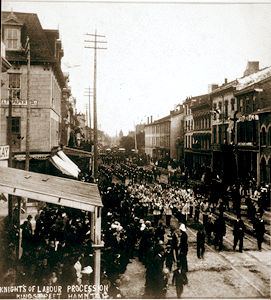Article
Co-operative Movement
Co-operative marketing organizations began to appear in British North America in the 1840s when British labourers attempted unsuccessfully to start stores similar to those common in Britain. The first stable store, or society, was developed in 1861 in Stellarton, NS.










